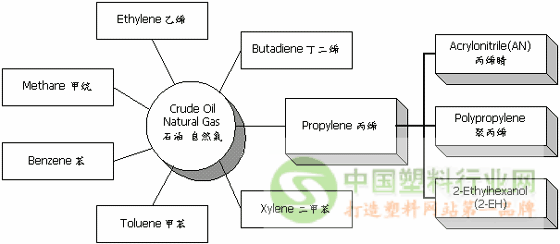Learning the basics of plastics will help you understand the physical and chemical properties and forming principles of various types of plastics. The following is a basic introduction to plastics.
Plastic is a synthetic polymer compound that can change its shape freely. Raw materials in synthesis or condensation reaction is the use of monomer polymerization material, by the synthetic resin and packing, plasticizer, stabilizer, lubricant, composed of additives such as pigment, it is the main component of synthetic resin. The term "resin" was originally named after the lipids produced by plants and animals, such as rosin, shellac, etc. At present, resin refers to polymers that have not yet been mixed with various additives. Resin accounts for about 40% ~ 100% of the total weight of plastic. The basic properties of plastic mainly depend on the nature of resin, but additives also play an important role. Some plastics are basically made of synthetic resins, without or without additives, such as organic glass, polystyrene, etc. As a result, the terms plastic and resin are often used together. Figure 1.1 shows the process of plastic production.

Figure 1.1 plastic production process
Plastic can be divided into thermosetting and thermal plasticity, the former can not be re-shaped and used, the latter can be repeatedly produced. There are two types of structure of plastic polymer. The first is linear structure. The second type is the body structure, and the macromolecular combination with this structure is called the body macromolecular compound. Some polymers with branched chains, called branched polymers, are linear. Although some macromolecules are crosslinked, they are less crosslinked, which is called reticular structure and belongs to body structure.
Molecular structure classification of polymers:
(a) linear structure
(b) linear structure (with support chain)
(c) reticular structure (small cross-linking between molecular chains)
(d) body structure (large number of crosslinks between molecular chains)
Two different structures exhibit two opposite properties. Because of the existence of independent molecules, high polymers with linear structures (including branched chains) have the characteristics of elasticity, plasticity, solubility in solvents, melting by heating, less hardness and brittleness. Due to the absence of independent macromolecules, the bulk polymer has no elasticity and plasticity, and cannot be dissolved and fused. It can only dissolve and swell, with high hardness and brittleness. Plastics have both types of polymer structure, made from linear polymer is thermoplastic, made from size polymer is thermosetting plastic.
Compared with other materials, plastics have the following characteristics:
> is resistant to chemical corrosion
< 2 > is glossy, partially transparent or translucent
< 3 > is mostly good insulator
< 4 > is light and strong in weight
< 5 > processing can be easily mass production, low price
< 6 > is versatile, versatile, easy to stain and high temperature resistant in some parts
Plastics are also classified as general-purpose plastics and engineering plastics, which are defined mainly by the generality of their USES. For example, PE and PP are cheap and can be produced on various types of machines. Engineering plastics are more expensive, but the stability and physical properties of raw materials are much better. Generally speaking, they have both rigidity and toughness. Table 1.1 is the comparison table of plastic materials. Items 1 to 8 are generic plastics, and items 9 and 10 are between the two. Commonly known as PP, HDPE, LDPE, PVC and PS for five general use plastics.